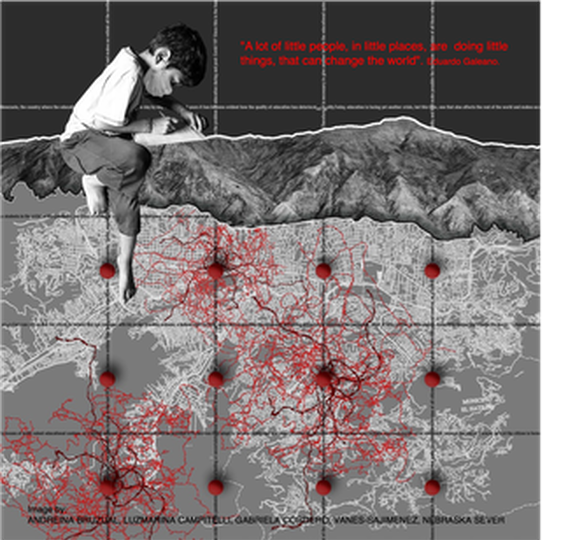Studio D/11
MISSING LINK:
FROM HALLUCINATION TO REALITY
Professor Justyna Karakiewicz

Studio Description
We will be looking at the consequences of climate change, in particular future frequent dramatic storm surges, flooding, and coastal erosion. In this context, we will reconceive the role of the bridge. You will redefine the purpose of bridge as “liveable and living” structure.
To respond to this challenge, we cannot think of bridges as static and completed structures in which everything is resolved and beautiful. Instead, we must propose infrastructure that can readapt, reconfigure, and change depending on ever changing desires, necessities, and environmental conditions. Your proposal could be a simple “liveable” bridge, or the complex infrastructure. However, you need to remember that:
Contemporary infrastructure space is the secret weapon of the most powerful people in the world precisely because it orchestrates activities that can remain unstated but are nevertheless consequential. (Keller Easterling, Extrastatecraft: The power of infrastructure space, Verso 2014)
And on the other hand, small changes within infrastructure can have equally dramatic consequences.
This semester studio D/11 will have students from Architecture and Urban Design. You will have a choice of working individually or as part of a larger group.
Studio Outcomes
On completion of this subject, students should be able to:
- Successfully create and resolve the design of a building of medium complexity.
- Develop performance-based design.
- Test theoretical propositions in an urban context.
- Translate regulatory constraints and urban policies into design parameters.
- Identify performance differences and mutual impacts within spatial programs.
- Understand the relationship between social programs and spatial form.
- Communicate a complex design vision in a clear and professional manner.
- Engage with concepts and possibilities of 'big data' and develop skills to use large data sets to directly inform design concepts and decision making.
- Develop the ability to put forward and provide convincing arguments for unconventional and provocative urban design propositions.
- Introduce design as a form of research. To be able to identify design challenges; set out a design research question and aim; articulate a design approach or method, test their approach with rigor to put forward design proposition; and draw conclusions identifying weakness and strengths of different approaches.
Studio Leaders
Professor Justyna KARAKIEWICZ, BArch (Hon), AA Dip, PhD, MSAI, RIBA, FRSA, trained as an architect at the Architectural Association. She taught at the Architectural Association, Bartlett School of Architecture, University College, London and spent 14 years as Associate Professor at The University of Hong Kong. Currently Professor at The University of Melbourne. Her main research interests are related to volumetric architecture, complex adaptive systems, and ethics of design. Justyna has exhibited her work at Royal Academy, London (6 times), Venice Biennale (3 times), New York, Kyoto, Barcelona, Hong Kong, Beijing, Sydney and some twenty other venues. Her successes in international competitions include: First Prizes in: Gateway to Mecca, Crystal Palace Solar Housing Competition, Dunkerque Waterfront, Swansea Working Men’s Club, and First Prize at Royal Academy Summer Exhibition for the best drawing, plus numerous second prices and merits awards. Justyna has published over 60 papers, 16 book chapters and three books.
Readings & References
- Graham, S. and Marvin, S., 2002. Splintering urbanism: networked infrastructures, technological mobilities and the urban condition. Routledge.
- Ballard, J.G., 2018. Concrete Island: a novel. Picador USA.
- Rossi, A., 1984. The architecture of the city. MIT press.
- Krznaric, R., 2020. The good ancestor: How to think long term in a short-term world. Random House.
- Väliverronen, E., 1998. Biodiversity and the power of metaphor in environmental discourse. Science & Technology Studies, 11(1), pp.19-34.
- Easterling, K., 2014. Extrastatecraft: The power of infrastructure space. Verso Books.
- Easterling, K., 2021. Medium design: Knowing how to work on the world. Verso Books.
- Easterling, K., 2012. We will be making active form. Architectural Design, 82(5), pp.58-63.
- Burry, J. and White, M. eds., 2023. Urban Dystopias: Lofty Ideals to Shocking Realities. John Wiley & Sons.
- Wang, S.M. and Huang, C.J., 2019. Using space syntax and information visualization for spatial behaviour analysis and simulation. International Journal of Advanced Computer Science and Applications, 10(4).
- Karakiewicz, J., 2016. Interventions in Complex Urban Systems: How to Enable Modelling to Account for Disruptive Innovation. Understanding Complex Urban Systems: Integrating Multidisciplinary Data in Urban Models, pp.113-127.
- Karakiewicz, J., 2023. Pertopia: Speculative Thinking in a Short‐Term World. Architectural Design, 93(1), pp.22-29.
Schedule:
Thursday 9am-3pm in MSD 146
Off-Site Activities: